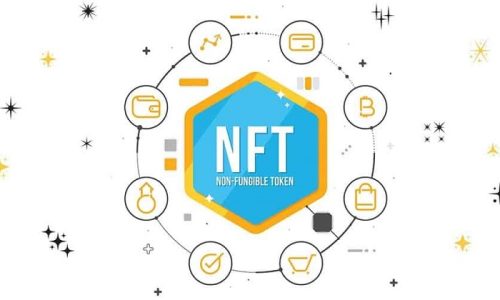
Introduction
There’s nothing more frustrating than pouring hours and hours into a project, only to realize that the finish on your parts just isn’t good enough. The best way to improve your finishing process is through trial and error, but there are some tried-and-true techniques you can use for each step of the process. In this guide, we’ll go over some common options for finishing CNC parts, like sanding, blasting, and powder coating.
Wipe Down Parts
You’ll want to wipe down the parts. You can use a damp cloth that has been lightly sprayed with mild detergent (or warm water if you don’t have detergent), but avoid harsh chemicals and solvents as these can leave residue on the part and affect your finish.
If you’re using a spray gun, clean it thoroughly after each use by removing any hardened paint or powder inside of it. It is also important not to store your guns with dried-out paint in them—this could cause clogs or other issues when you go to use them later!
Powder Coating
Powder coating is a great way to finish your parts. The process of powder coating is cost-effective, safe for the environment, and can be applied to many different types of materials. It also allows you to apply several layers of color or texture, if desired. This makes it ideal for CNC-machined parts that have been finished with a machine shop’s sandblasting service.
If you have parts that need finishing but don’t have time, then hiring professional powder coating might be the best solution for you!
Sanding and Blasting
Sandblasting is a process that removes material by propelling it away from the surface. This is done with a variety of materials, including glass beads, steel shot, and aluminum oxide. Sandblasting can be used to remove paint, rust, or other coatings.
Abrasive Blasting
Abrasive blasting is a process that uses a combination of cutting and abrasion to remove paint, rust, corrosion, and other contaminants from metal parts. This can be accomplished with the use of a blast cabinet or an abrasive blasting machine. Abrasive blasting machines are typically more powerful and allow for more flexibility when it comes to media choices.
Blast cabinets are enclosed structures that keep dust particles contained inside the cabinet during operation. These cabinets often feature multiple ports for spray guns so that you can simultaneously apply different types of media (e.g., garnet and aluminum oxide). Other features may include air filtration systems or water misting devices to prevent overheating while cleaning large pieces of equipment, such as cars or trucks.
Abrasives come in many sizes, ranging from very fine sand up to very coarse grains like crushed glass beads, which could potentially damage your surfaces if not used correctly! Therefore, it’s important to understand what type of material you’re working with before choosing which size abrasive would be best suited for your application needs.
Grinding
Grinding is a finishing process that uses an abrasive material to remove metal from the surface of a part. The resulting finish depends on the type and amount of material used. For example, grinding can be done with sandpaper or other similar materials; it can also be done with a machine that has diamond tips that wear away at the surface of your part. Grinding helps smooth out rough edges and gives you a more uniform final product for your CNC parts.
The process requires removing excess bits from your part so it fits together properly without any burrs or uneven spots where pieces connect—this way everything fits well without any issues later on down the line if something breaks off where it shouldn’t have been removed yet (like when you’re trying to assemble two pieces).
Vibratory Finishing
Vibratory finishing is a process used in metal fabrication to improve the surface finish of components and parts. It’s an effective way to remove burrs, sharp edges, and other imperfections from metal parts. The process involves placing the parts in a vibratory tumbler with media such as steel shot or ceramic media and running it for a certain amount of time. This causes the media to rub against the parts, removing any imperfections that may be present on them. The result is a smooth finish that can be further polished if desired. Vibratory finishing can be used on many different types of metals, including aluminum, stainless steel, brass, and bronze.
Cleaning Your Parts
Cleaning your parts is the first step to finishing them. The process is simple: use a degreaser or soap and water to clean off all of the grease, oil, and dirt from your parts. This will make sure that you don’t accidentally contaminate them with any contaminants, which could affect the finish of your part.
Once you’ve cleaned off all oils from your part with soap and water, dry it completely with a rag or paper towel before moving on to other steps in finishing CNC parts.
Make sure you choose the right finishing option for your parts.
There are several different finishing options that you can choose from when you are creating your product. These include wiping down, powder coating, sanding and blasting, abrasive blasting, grinding, and vibratory finishing. Each of these methods offers advantages and disadvantages depending on the type of part you’re making and how much time you want to spend on the finishing process.
For example: in our experience with MDF products (medium density fiberboard), we found that wiping down works well for smaller projects like cutting boards or jewelry boxes because it’s easy to do by hand using common household cleaners such as Pledge or 409, but doesn’t provide enough protection against moisture damage over time if left untreated afterward without any sealing products applied afterward which makes it less ideal for large pieces like tables due to their size being difficult to reach every inch at once during this step — especially if they’re made out of particle board instead since those tend not have finished sides due to how easily they would splinter off otherwise—instead opting towards something like sanding & then applying another coat afterward before sealing again with polyurethane varnish so as not cause as much risk during long term use…
Conclusion
We hope this guide has given you some insight into the many different types of finishing processes. There are many options out there for CNC parts, and we’re confident that one of them will fit your needs perfectly!



